Disclosure: This article contains affiliate links. We may earn a commission from purchases at no extra cost to you, which helps our travel content.
While I typically travel solo to document linguistic diversity across the globe, my recent journey to Balaton-tó (Lake Balaton) in Hungary was a delightful departure—hosting my sister and her two energetic children for a week of cultural immersion at what Hungarians affectionately call their inland sea. This expansive freshwater lake, with its gentle shores and surprising diversity of activities, revealed itself as an overlooked European family destination that beautifully balances cultural experiences with pure childhood joy.
Understanding Lake Balaton: A Linguistic and Cultural Introduction
Before diving into specific activities, it's worth understanding what makes Balaton unique. Hungarians don't just consider this their largest lake—it's their tenger (sea), their cherished riviera. The Magyar language reflects this relationship: locals call a visit here nyaralás (literally 'summering'), not simply vacation.
The lake spans 77km, with distinctly different characters along its shores. The southern shore (déli part) offers shallow, warmer waters perfect for families with younger children, while the northern shore (északi part) provides deeper waters, hillside vineyards, and more cultural attractions. The water itself has a distinctive greenish-turquoise hue from the limestone and mineral content—something my niece Ella immediately noted as 'mermaid water.'
What struck me most was how Hungarian families approach Balaton holidays with an almost ritualistic devotion. Many return to the same towns, same beaches, even the same rental houses year after year. This creates a beautiful continuity of experience across generations that we rarely see in American vacation culture.
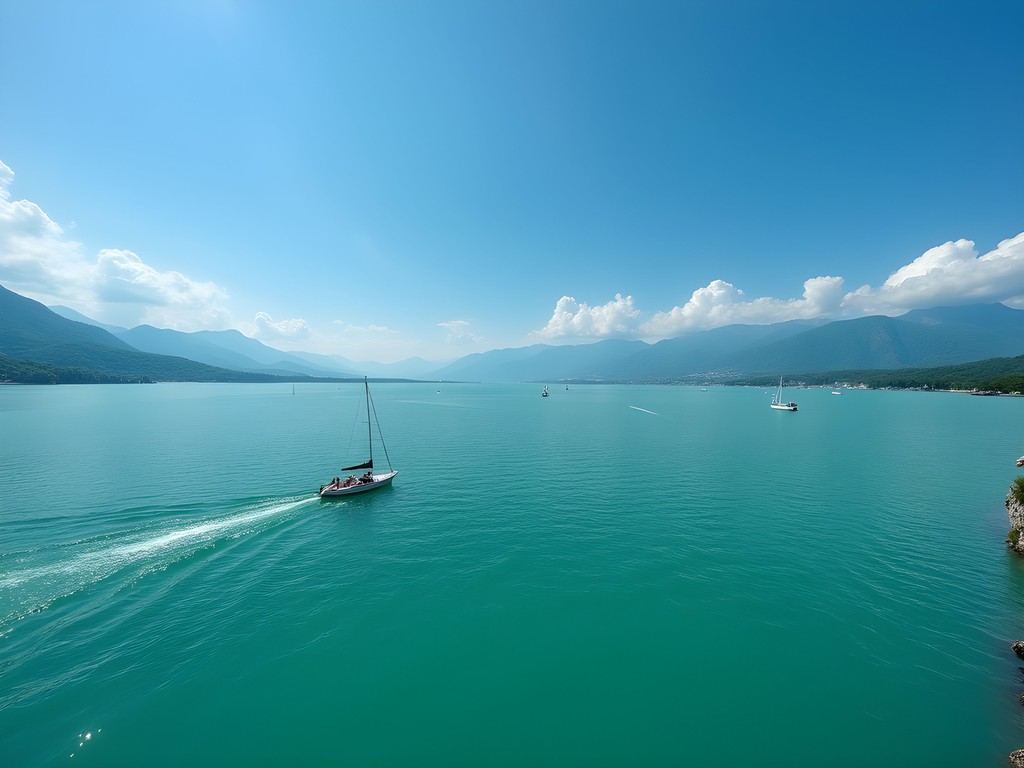
💡 Pro Tips
- Learn a few basic Hungarian phrases like 'Köszönöm' (thank you) and 'Jó napot' (good day) – locals appreciate the effort
- The northern shore towns are generally quieter and more picturesque than the busier southern shore
- Hungarian currency is the forint (HUF) – withdraw some cash as smaller establishments may not accept cards
1. Beach Days at Child-Friendly Strands
The southern shore's gently sloping beaches are perfect for families with young children. We spent most of our beach days at Zamárdi and Siófok, where my niece and nephew could wade nearly 50 meters out while still standing comfortably. The term strand in Hungarian doesn't just mean beach but specifically refers to these developed lakeside areas with facilities.
What makes Balaton's strands uniquely child-friendly is their infrastructure. Most feature playgrounds directly on the beach, shallow roped-off swimming areas, and affordable inflatable water features. My nephew spent hours on the water trampolines at Siófok strand, while my niece preferred the sandy bottom at Zamárdi.
Before heading out, I recommend packing a water shoes for everyone in the family. While many beaches are sandy, others have pebbly entries, and water shoes make the experience much more comfortable. Also essential was our beach tent which provided crucial shade during the intense midday Hungarian sun.

💡 Pro Tips
- Most strands charge a small entrance fee (around 1000-1500 HUF for adults, less for children)
- Arrive early (before 10am) to secure good spots, especially during July and August
- Many strands rent sun loungers and umbrellas, but bringing your own beach tent saves money over a week
2. Thermal Lake Swimming at Hévíz
Just a short drive from Balaton's western edge lies one of Hungary's most unique attractions: Lake Hévíz, Europe's largest thermal lake. While I've experienced thermal baths throughout my travels, swimming in a natural thermal lake was a first—and watching my niece and nephew's expressions as they floated among water lilies in the warm, mineral-rich waters was priceless.
The lake maintains a constant temperature of around 33°C (91°F) year-round, making it comfortable even for children who typically complain about cold water. The mineral content creates a slight buoyancy effect that delighted the kids, who found they could float with minimal effort.
The traditional bathing culture here dates back to Roman times, and you'll see many Hungarian families with three generations enjoying the waters together. The children particularly enjoyed using the water noodles we brought along, which made floating even easier in the mineral-rich water.
The linguistic aspect fascinated me—listening to Hungarian grandparents teaching grandchildren the traditional bathing customs using specialized vocabulary that exists only in Hungarian spa culture, like gyógyvíz (healing water) and úszógumi (swimming ring).
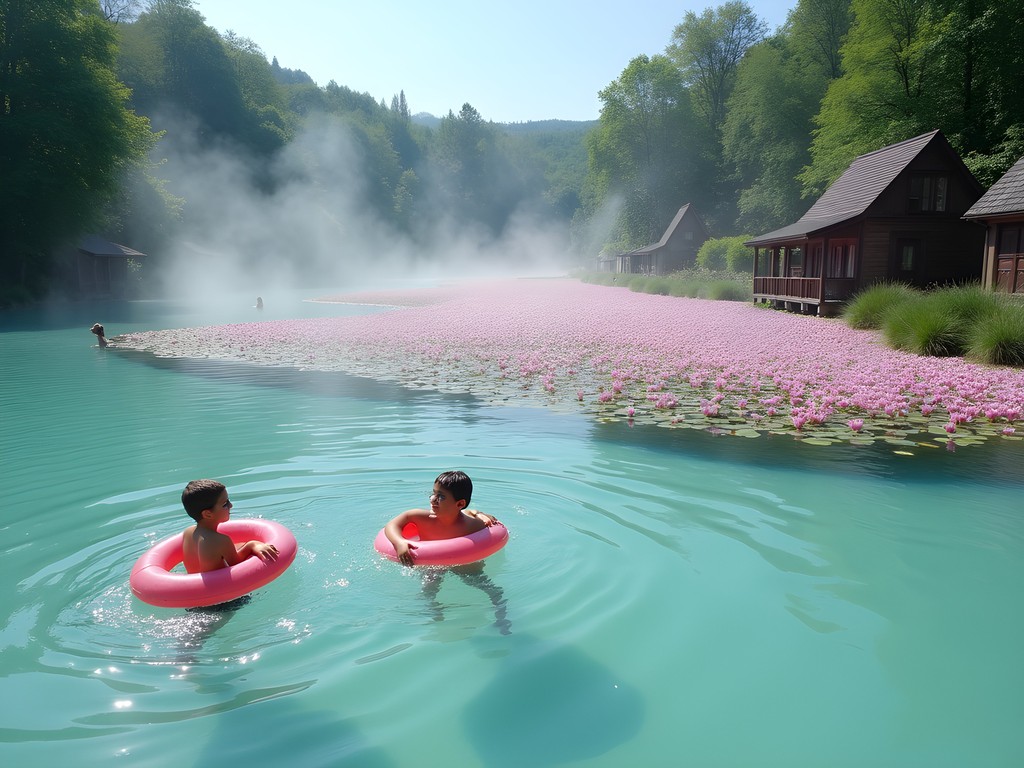
💡 Pro Tips
- Visit early morning or late afternoon to avoid midday crowds
- Children under 14 have reduced entry fees, and family tickets offer the best value
- The traditional method is to bathe for 20 minutes, rest for 10 minutes, then repeat up to three times
3. Castle Exploration at Szigliget and Sümeg
Lake Balaton's northern shore is dotted with medieval castles that transform history lessons into tactile adventures. We spent one morning exploring Szigliget Castle, perched dramatically on a volcanic hill overlooking the lake. While I appreciated the historical significance and linguistic evolution of place names (Szigliget translates roughly to 'island barrier'), the children were simply thrilled by the freedom to climb stone stairs, peek through arrow slits, and pretend to defend the fortress.
The real highlight was Sümeg Castle, about 30 minutes inland from the lake. Unlike many European castles that feel like museums, Sümeg specifically caters to families with interactive exhibits and regular medieval tournaments. My nephew, normally resistant to historical sites, was completely captivated by the knights' tournament, where performers demonstrate medieval combat techniques and horsemanship.
Before our castle adventures, I made sure to pack our kids binoculars which proved invaluable for spotting distant landmarks from the castle towers and examining architectural details up close. For the amount of walking involved, I was grateful for my collapsible water bottle which saved space in my day pack once empty.
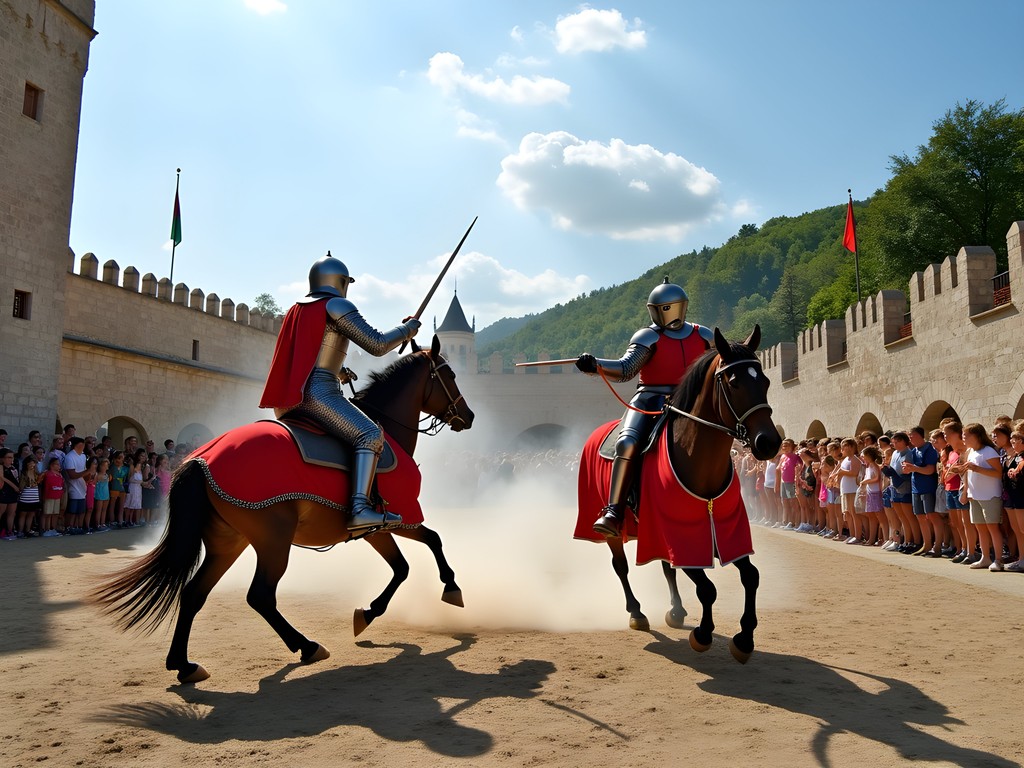
💡 Pro Tips
- Visit castles in the morning before the summer heat intensifies
- Check tournament schedules in advance for Sümeg Castle to plan your visit around performances
- Both castles involve uphill walks – bring water and plan rest stops for younger children
4. Language Adventures Through Food Markets
As a linguist, I couldn't resist turning our market visits into language adventures for the children. The weekly markets (piac in Hungarian) around Lake Balaton offer a sensory immersion into Hungarian culture that captivates even the most screen-addicted children.
At Keszthely's Thursday market, I created a simple game for my niece and nephew: learn one Hungarian food name, then find and purchase that item from a vendor using only Hungarian. With some coaching on pronunciation and basic phrases like Kérek szépen ('I would like, please'), they gained confidence with each transaction.
The vendors responded with such warmth to their attempts—often adding extra fruit to our purchases or teaching them additional words. By the end of our week, they could confidently identify meggy (sour cherry), kajszibarack (apricot), and dinnye (melon) without prompting.
For preserving these market treasures, our insulated lunch bag was essential for keeping produce fresh during hot afternoons at the beach. The children also enjoyed collecting their market finds in their own mesh produce bags which made them feel like real market shoppers.

💡 Pro Tips
- Research market days in advance – each town has specific days when markets operate
- Let children handle small amounts of forint to make their own purchases
- Try the local *lángos* (fried dough) topped with sour cream and cheese – a Balaton specialty that children universally love
5. Sailing Adventures on Traditional Boats
Lake Balaton's name is synonymous with sailing in Hungarian culture, and introducing children to this tradition offers both adventure and cultural insight. Rather than modern sailing experiences, we opted for a traditional wooden boat tour on a restored vitorlás (sailboat) from Balatonfüred's historic harbor.
These traditional boats with their distinctive gaff rigs have been sailing Balaton for generations, and many captains come from families with centuries of lake heritage. Our captain, Zoltán, shared stories of lake legends and taught the children basic sailing terminology in Hungarian—szél (wind), vitorla (sail), and kormány (rudder) quickly entered their vocabulary.
Most memorable was when he allowed each child to take the tiller under his guidance, creating that perfect balance of perceived adventure and actual safety that makes for core childhood memories. The experience culminated with spotting the Tihany Peninsula's twin church towers from the water—a perspective that helped the children understand the lake's geography in a way maps never could.
For this excursion, our waterproof phone pouch proved invaluable for capturing photos without worrying about splashes or drops overboard.
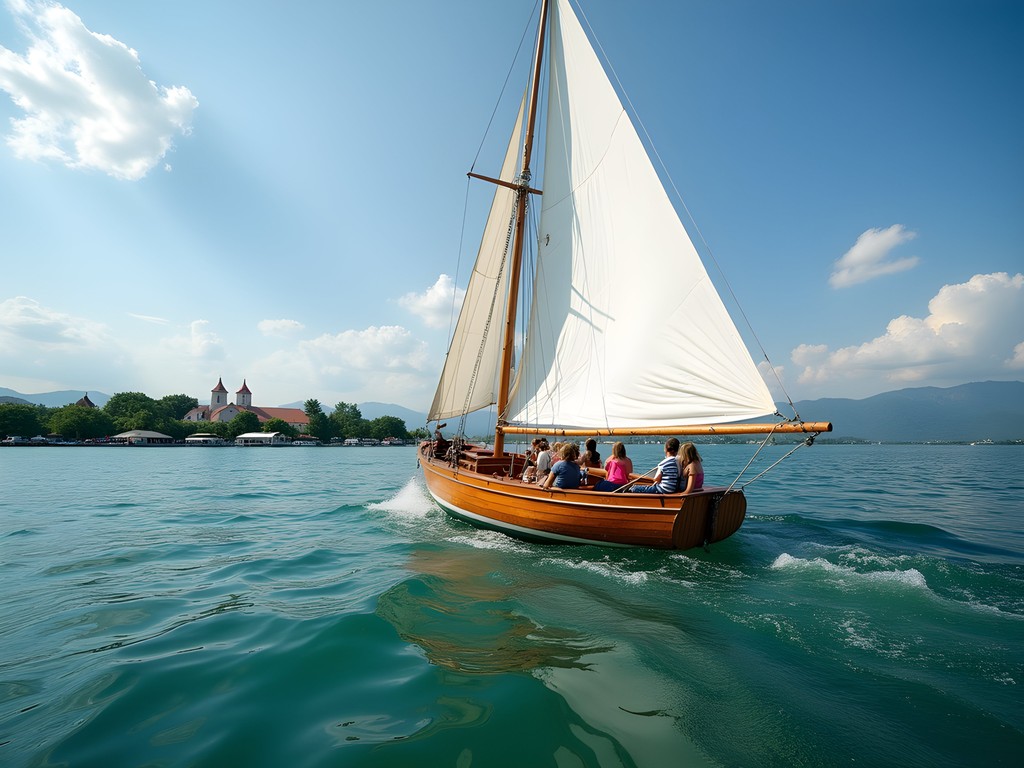
💡 Pro Tips
- Book traditional sailing experiences in advance, especially in high season
- Morning sailings typically offer calmer waters, better for children prone to motion sickness
- Bring light jackets even on warm days as it can be cooler on the water
6. Tihany Peninsula's Lavender and Echo
The Tihany Peninsula, jutting dramatically into Lake Balaton, offers multiple layers of discovery for families. We began at the Benedictine Abbey, where the famous Tihany Echo has been drawing visitors for centuries. The children were mesmerized by the acoustic phenomenon—shouting Hungarian phrases I taught them (Szép napot! 'Beautiful day!') and waiting for the echo to return their words across the water.
Beyond the abbey lies the peninsula's hidden treasure: lavender fields that transform summer visits into sensory experiences. While Hungary isn't typically associated with lavender like Provence, Tihany's microclimate creates perfect growing conditions. The Lavender House visitor center offers child-friendly workshops where my niece and nephew made lavender sachets to take home—tactile souvenirs that still scent their rooms months later.
The peninsula also features an open-air ethnographic museum with traditional thatched houses where children can participate in bread-making and try on traditional folk costumes. These immersive activities transformed what could have been a simple sightseeing stop into a full day of engagement.
For capturing the lavender fields in their full glory, my clip-on smartphone lenses allowed me to take wide-angle shots that encompassed the sweeping purple fields against the blue backdrop of Lake Balaton.
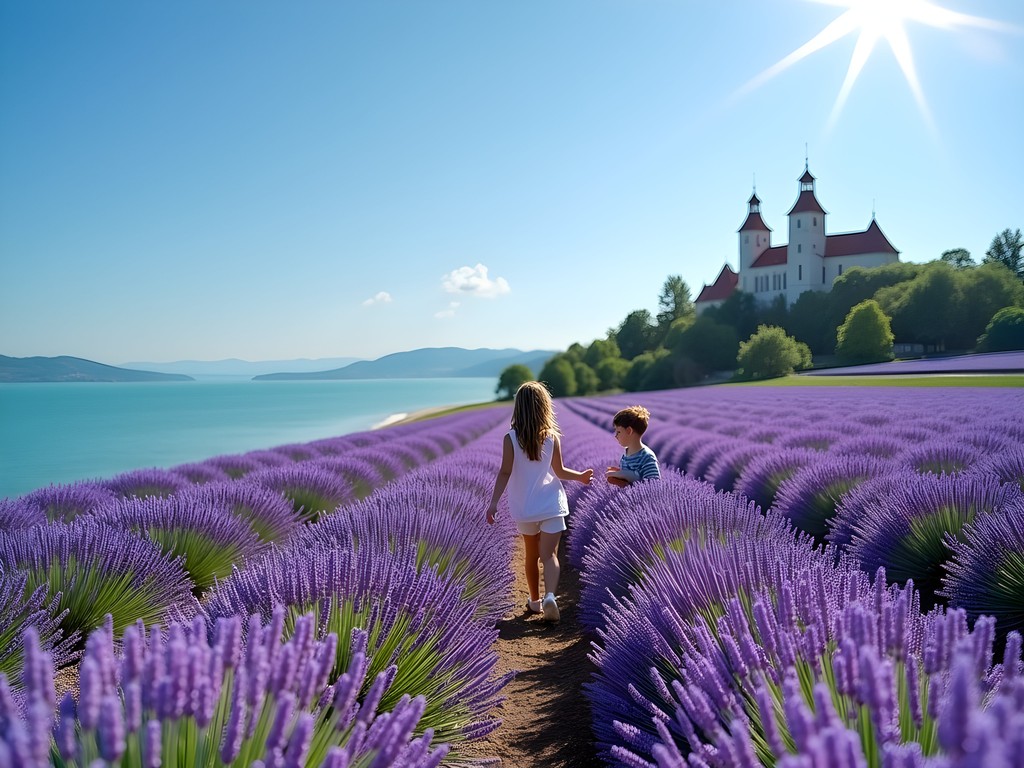
💡 Pro Tips
- Visit lavender fields in late June to early July for peak blooming
- Call ahead to reserve spots in children's workshops at the Lavender House
- The walk to the echo point from the abbey is steep – consider taking the tourist train for tired young legs
7. Buffalo Reserve and Nature Trails
One of Lake Balaton's best-kept secrets for families is the Kápolnapuszta Buffalo Reserve near the lake's western end. While European bison disappeared from Hungary centuries ago, water buffalo have been part of the Balaton-felvidék National Park ecosystem for generations, helping maintain the wetland habitats through grazing.
The reserve's 1.5km walking trail is perfectly sized for children, with multiple observation points where the massive buffalo can be safely viewed. The Hungarian word for these creatures—bivaly—became one of my nephew's favorite new vocabulary words, pronounced with great enthusiasm whenever we spotted the animals.
What makes this experience special is how it combines wildlife viewing with environmental education. Interactive displays explain the buffalo's role in maintaining biodiversity, while guides demonstrate traditional crafts using buffalo horn and leather. My niece was particularly fascinated by the traditional pásztorkészség (shepherd's tools) carved from buffalo horn.
For this nature excursion, our bug spray was essential as the wetland areas can attract mosquitoes, especially in the evening hours. I also recommend bringing a field guide which helped us identify other wildlife along the trail.
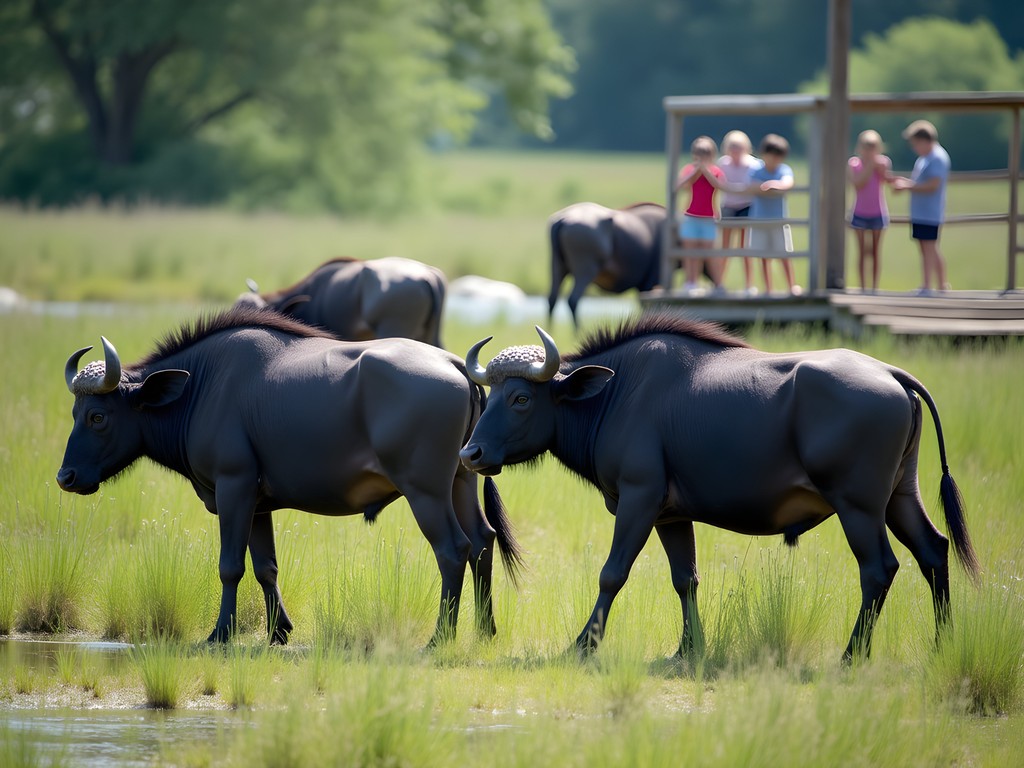
💡 Pro Tips
- Visit in early morning or late afternoon when buffalo are most active
- Wear closed shoes as trails can be muddy after rain
- Bring binoculars for better wildlife viewing from the observation towers
8. Hands-on History at Festetics Palace
While grand European palaces can sometimes feel stuffy and boring for children, Keszthely's Festetics Palace offers a refreshingly family-friendly approach to aristocratic history. The baroque palace itself is impressive, but what truly engaged the children were the specialized, interactive exhibitions designed specifically for younger visitors.
The palace's model railway exhibition, displaying the development of transportation around Lake Balaton, fascinated my train-loving nephew. Meanwhile, the historic games room allowed both children to try traditional wooden toys and games that Hungarian children would have played with centuries ago.
Most impressive was the palace's approach to linguistic heritage. Interactive displays teach children basic Hungarian noble titles and palace vocabulary through games. My niece quickly learned to distinguish between gróf (count) and grófnő (countess), proudly identifying portraits throughout our visit.
The palace gardens provided a perfect energy-release zone between indoor exhibits. Here, our portable picnic blanket transformed a simple lunch break into a royal picnic on the manicured lawns, giving the children a chance to rest while imagining themselves as young aristocrats.
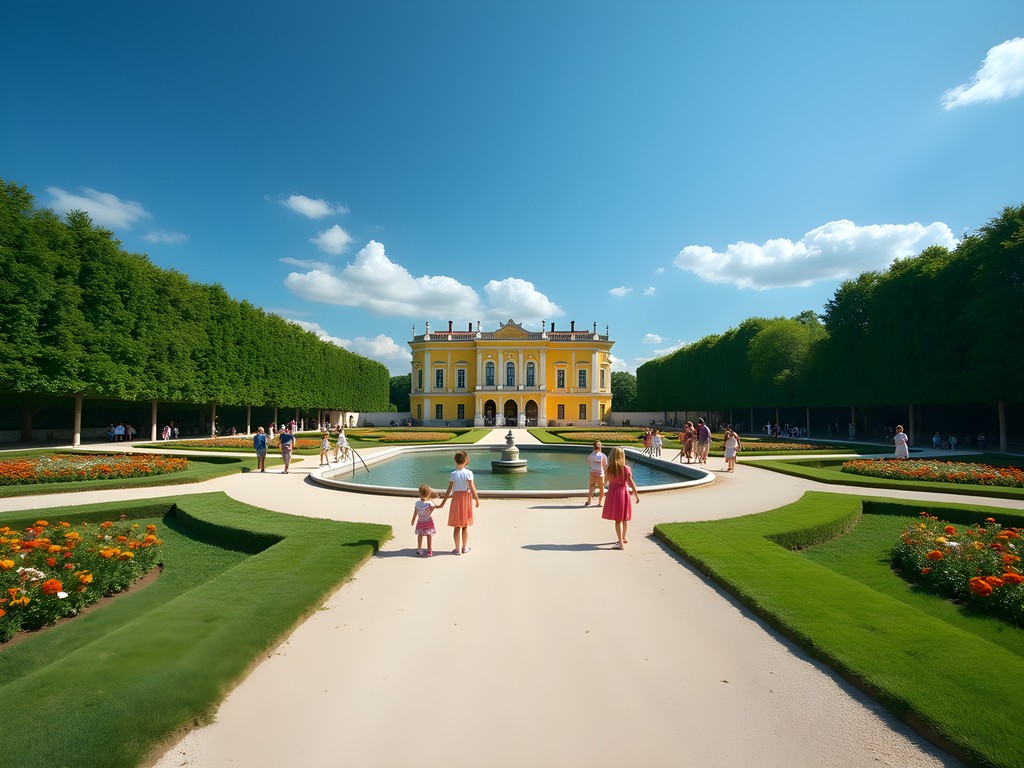
💡 Pro Tips
- Request the family-focused tour route when purchasing tickets
- Visit the palace stables and coach museum – particularly interesting for children who love horses
- Check the schedule for the palace's children's concerts often held Sunday mornings in summer
9. Cave Lake Adventure at Tapolca
Just a short drive from Lake Balaton's northern shore lies one of Hungary's most unique attractions: the underground lake cave system at Tapolca. This remarkable geological formation combines education and adventure in a way that captivates children of all ages.
The cave system features Europe's only navigable underground lake, where visitors can paddle small boats through narrow limestone passages. The Hungarian term csónakázó barlang (boating cave) perfectly captures this unusual experience. My niece and nephew were initially apprehensive about entering the cave but quickly became enchanted by the ethereal beauty of the crystal-clear water and the adventure of navigating through the underground passages.
Before the boat ride, the excellent visitor center explains the karst formation process through interactive exhibits designed for children. The guides skillfully incorporate scientific concepts about water filtration and limestone dissolution into engaging stories, making complex geology accessible even to younger visitors.
For this underground adventure, our headlamp provided extra illumination for examining limestone formations up close. Though the main pathways are lit, having our own light source enhanced the exploration experience.
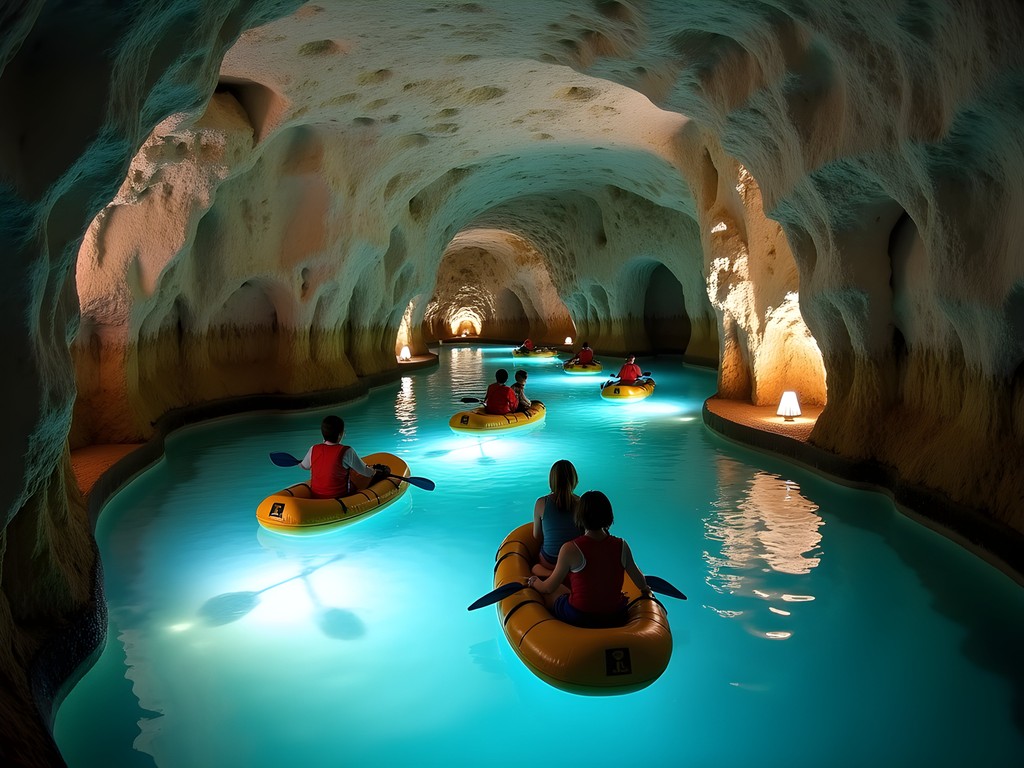
💡 Pro Tips
- Book boat rides in advance during peak summer season to avoid long waits
- Bring a light jacket as the cave maintains a constant 20°C (68°F) temperature year-round
- Visit the Malom Lake above ground afterward – its crystal clear waters show where the cave system connects to the surface
10. Folklore and Crafts in Tihany's Skansen
Our final family activity combined linguistic heritage with hands-on crafts at the Tihany Open-Air Ethnographic Museum (locally called skanzen). This collection of restored traditional houses showcases how fishing families lived around Lake Balaton over the centuries.
What distinguishes this museum is its commitment to interactive experiences rather than simply displaying artifacts. Throughout summer, craftspeople demonstrate traditional skills and invite children to participate. My niece spent nearly an hour learning basic weaving techniques on a traditional loom, while my nephew was captivated by the blacksmith demonstration.
The museum also preserves linguistic heritage through its collection of folk tales and songs specific to the Balaton region. We attended a puppet show performed entirely in Hungarian, yet the expressive puppetry and universal story elements kept the children engaged despite the language barrier. Afterward, they participated in a workshop creating simple puppets of traditional Hungarian folk characters.
For documenting these craft experiences, our instant camera allowed the children to create immediate physical mementos of their creations. They particularly enjoyed gifting photos to the craftspeople who had taught them.

💡 Pro Tips
- Check the demonstration schedule upon arrival to plan your visit around specific craft activities
- Budget extra time for workshops where children can create take-home crafts
- Look for the special children's audio guide available in English that focuses on how children lived in historical times
Final Thoughts
Lake Balaton offers that rare combination of cultural depth and pure childhood joy that creates truly meaningful family travel experiences. What struck me most was how the linguistic landscape—from learning to order fagyi (ice cream) in Hungarian to understanding the historical terms at Festetics Palace—created deeper connections for the children than typical sightseeing ever could.
As we said viszontlátásra (goodbye until we meet again) to Balaton, my niece asked when we could return, already planning which Hungarian phrases she would learn for our next visit. This, perhaps, is the true measure of successful family travel—not just checking sights off a list, but kindling curiosity that extends beyond the journey itself.
Whether your family seeks active adventures, cultural immersion, or simply beach relaxation, Balaton's diverse offerings ensure everyone finds their perfect Hungarian holiday rhythm. As the locals say, Jó nyaralást kívánok! (I wish you a good summer holiday!)
✨ Key Takeaways
- Lake Balaton offers an ideal balance of cultural experiences and pure fun for families
- Learning even a few Hungarian phrases significantly enhances children's connection to local experiences
- The northern and southern shores offer distinctly different experiences – consider splitting your stay between both
- Summer (June-August) offers the fullest experience, though May and September provide fewer crowds with still-pleasant weather
📋 Practical Information
Best Time to Visit
Summer (June-August)
Budget Estimate
$100-200 per day for a family of four
Recommended Duration
5-7 days
Difficulty Level
Easy


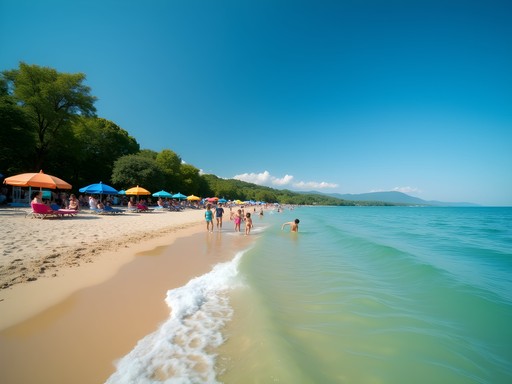
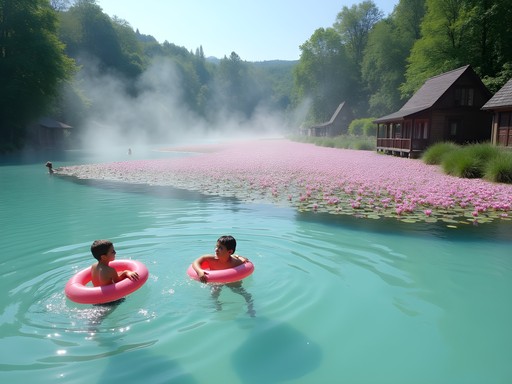
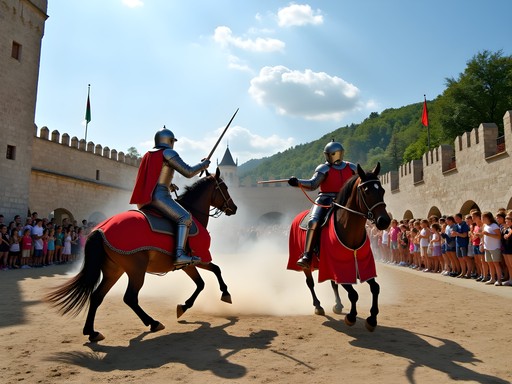
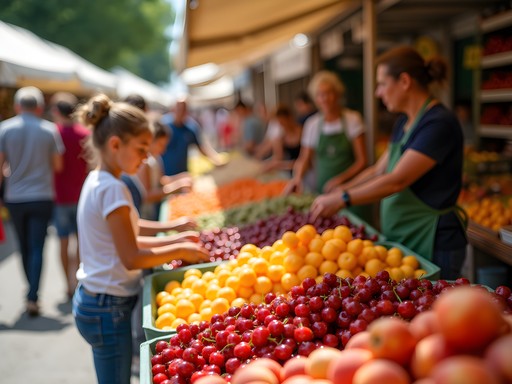
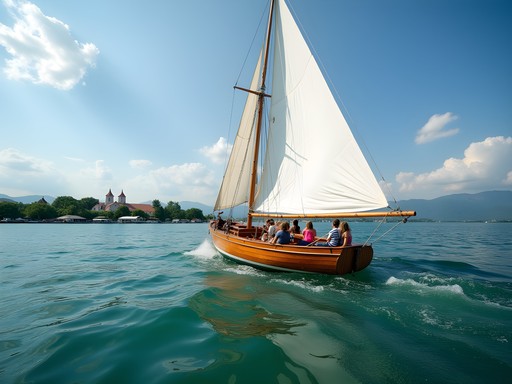


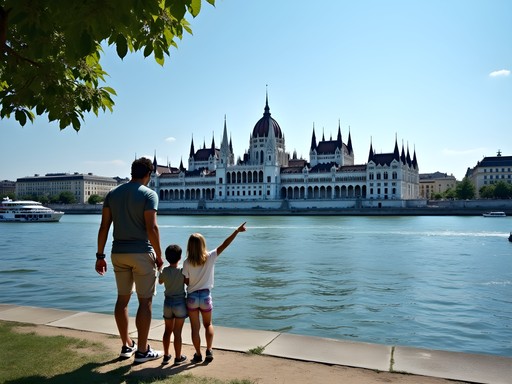

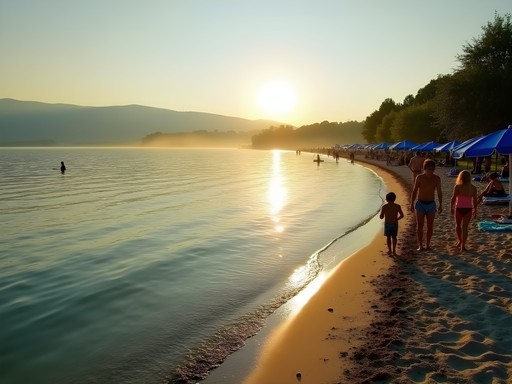


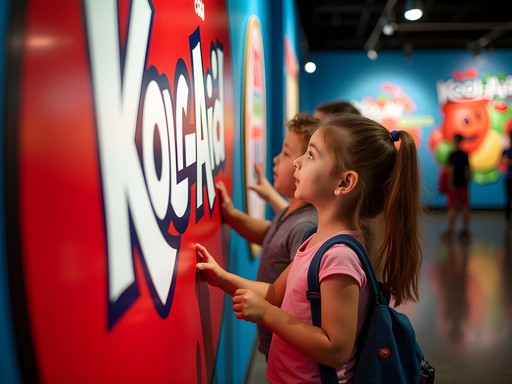
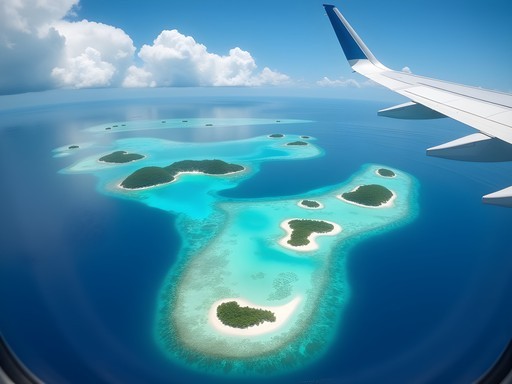
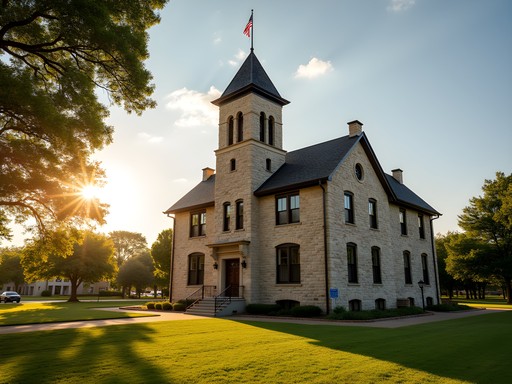
Comments
mountainhero7768
Great post! Planning to visit with my 4-year-old next summer. How's the public transportation around the lake? Is it realistic to get around without renting a car?
Stephanie Romano
We did Lake Balaton last summer with just public transport and it worked great! There's a train that runs along the southern shore pretty frequently, and ferries connect to the northern side. With a 4-year-old, I'd recommend staying in one of the bigger towns like Siófok or Balatonfüred as a base. We used our collapsible wagon for hauling beach stuff and tired kids - absolute lifesaver on the walk from train stations to beaches!
mountainhero7768
Thanks so much! That's really helpful. I was worried about logistics with a little one, but sounds doable!
wavelegend
Just got back from Balaton last month with our kids (7 and 9) and this post is spot on! The beaches at Siófok were perfect for our little ones - shallow water for what felt like forever. We also did the thermal lake at Hévíz but I wish I'd read this first because we didn't know about the age restrictions and had to take turns watching our youngest. The castle at Szigliget was the highlight for my son though - he's still talking about being a "Hungarian knight" lol. Did anyone try the bob-sledding at Balatonfüred? We ran out of time but heard it's amazing for kids.
greendiver
Yes! The bob-sledding was awesome. My kids (10 and 12) couldn't get enough of it. Worth going back for!
wavelegend
Ah man, definitely putting that on the list for next time then. Thanks!
Venture X
Premium card with 2X miles, $300 travel credit, Priority Pass